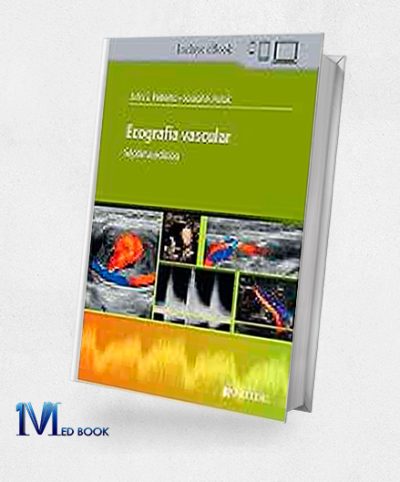Paraneoplastic Neurologic Disorders (Handbook Of Clinical Neurology, Volume 200) (Original PDF From Publisher)
Paraneoplastic Neurologic Disorders (Handbook Of Clinical Neurology, Volume 200) (Original PDF From Publisher)
| File Size |
56.2 MB |
|---|---|
| Format |
Publisher PDF |
| ISBN-10 |
0128239123 |
| ISBN-13 |
978-0128239124 |
| Publisher |
Elsevier |
| Language |
English |
$295.00 Original price was: $295.00.$37.00Current price is: $37.00.
- The files will be sent to you via E-mail
- Once you placed your order, we will make sure that you receive the files as soon as possible
5/5
Description
Paraneoplastic Neurologic Disorders (Handbook Of Clinical Neurology, Volume 200) (Original PDF From Publisher)
The intricate relationship between the nervous system and cancer can sometimes manifest in unexpected ways. Paraneoplastic neurologic disorders (PNDs) represent a fascinating, yet challenging, subset of neurological conditions that arise as a consequence of cancer elsewhere in the body. Handbook of Clinical Neurology, Volume 200: Paraneoplastic Neurologic Disorders delves into this intricate realm, providing a comprehensive overview for healthcare professionals seeking to understand, diagnose, and manage these disorders.
Paraneoplastic Neurologic Disorders: A Multifaceted Entity

Paraneoplastic Neurologic Disorders (Handbook Of Clinical Neurology, Volume 200) (Original PDF From Publisher)
PNDs are a heterogeneous group of disorders characterized by a wide range of neurological symptoms that occur in association with an underlying malignancy. Unlike other neurological conditions where the nervous system itself is directly affected (e.g., brain tumors or infections), PNDs arise due to an immune-mediated response triggered by the cancer. The body’s immune system, mistaking the cancer cells for foreign invaders, produces antibodies or T-cells that attack not only the cancer but also parts of the nervous system that share similar proteins.
Handbook of Clinical Neurology, Volume 200: Paraneoplastic Neurologic Disorders meticulously explores the various facets of this complex entity:
-
Clinical Manifestations: The book meticulously details the diverse clinical presentations of PNDs. Symptoms can encompass a wide spectrum, including weakness, numbness, incoordination, vision problems, cognitive decline, seizures, and movement disorders. The specific presentation often depends on the affected area of the nervous system.
-
Diagnostic Challenges: Diagnosing PNDs can be a complex endeavor. The book delves into the various diagnostic tools employed, including a detailed neurological examination, neuroimaging studies, cerebrospinal fluid analysis, and the identification of specific paraneoplastic antibodies in the blood or cerebrospinal fluid. These antibodies serve as crucial markers for the presence of a PND.
-
Underlying Malignancies: Handbook of Clinical Neurology, Volume 200 explores the association between various types of cancer and the PNDs they can trigger. Certain cancers, such as small cell lung cancer and thymic malignancies, are more frequently associated with PNDs. Understanding this association plays a vital role in guiding the search for the underlying malignancy.
-
Treatment Strategies: While there is no single cure for PNDs, the book outlines various treatment approaches aimed at managing the neurological symptoms and controlling the underlying cancer. Treatment options may include immunotherapy, corticosteroids, and other immunosuppressive medications. In some cases, managing the cancer itself can lead to improvement in neurological symptoms.

Paraneoplastic Neurologic Disorders (Handbook Of Clinical Neurology, Volume 200) (Original PDF From Publisher)
The Significance of Handbook of Clinical Neurology, Volume 200: Paraneoplastic Neurologic Disorders
Paraneoplastic Neurologic Disorders presents a valuable resource for healthcare professionals encountering these complex conditions. Here’s how this book empowers them:
-
Enhanced Diagnostic Accuracy: By providing a comprehensive overview of clinical presentations, diagnostic tools, and paraneoplastic antibodies, the book equips healthcare professionals to identify PNDs with greater accuracy. This can lead to a faster diagnosis and the initiation of appropriate treatment.
-
Improved Patient Care: Early and accurate diagnosis of PNDs paves the way for the development of a personalized treatment plan. The book’s insights into treatment strategies empower healthcare professionals to manage neurological symptoms and improve patients’ quality of life.
-
Advanced Understanding of the Neuro-Immune Interface: PNDs offer a unique window into the complex interplay between the nervous system and the immune system. Handbook of Clinical Neurology, Volume 200 deepens this understanding, potentially leading to new avenues for research and the development of more targeted therapies.
Who Should Utilize Handbook of Clinical Neurology, Volume 200: Paraneoplastic Neurologic Disorders?
Given the complexities of PNDs, this book serves as a valuable resource for a variety of healthcare professionals:
-
Neurologists: For neurologists encountering patients with atypical neurological presentations, the book provides a comprehensive guide to diagnosis and management of PNDs.
-
Oncologists: Oncologists treating cancer patients can benefit from the book’s insights into the neurological complications associated with cancer, enabling them to provide more holistic care.
-
Neuromuscular Specialists: Neuromuscular specialists often encounter patients with weakness or other symptoms that could potentially be due to a PND. This book provides them with the necessary knowledge for accurate identification and management.
-
General Neurologists and Internists: While PNDs are less common, a basic understanding of these disorders is crucial for all general neurologists and internists, as they may be the first point of contact for patients with these complex presentations.

Paraneoplastic Neurologic Disorders (Handbook Of Clinical Neurology, Volume 200) (Original PDF From Publisher)
In conclusion, Handbook of Clinical Neurology, Volume 200: Paraneoplastic Neurologic Disorders serves as an invaluable resource for healthcare professionals navigating the intricate world of PNDs. Its in-depth exploration of clinical manifestations, diagnostic challenges, underlying malignancies, and treatment strategies empowers them to provide more accurate diagnoses, develop effective treatment plans, and ultimately, improve the lives of patients affected by these complex neurological conditions.
This book stands as a testament to the ongoing pursuit of knowledge within the field of neurology, paving the way for future advancements in the diagnosis, management, and potential cure for paraneoplastic neurologic disorders.
Make sure that you are buying e-books from trustworthy sources. With over a decade of experience in the e-book industry, the Medbook1.com website is a reliable option for your purchase.
Categories:
Other Products:
API Textbook Of Medicine (2 Volumes), 12th Edition (EPub+Converted PDF+E-Content)
IAN Textbook Of Neurology: Two Volume Set, 2nd Edition (EPub+Converted PDF)
Reviews (0)
Be the first to review “Paraneoplastic Neurologic Disorders (Handbook Of Clinical Neurology, Volume 200) (Original PDF From Publisher)” Cancel reply
Related products
General Organic and Biochemistry 11th edition (Original PDF from Publisher)
Rated 0 out of 5
Ecografia Vascular 7th Edition (High Quality Image PDF)
Rated 0 out of 5
Cuidados perioperatorios (True PDF)
Rated 0 out of 5
Brenner y Stevens Farmacología básica 6th edition (True PDF)
Rated 0 out of 5
Netters Concise Radiologic Anatomy 2e Netter Basic Science (ORIGINAL PDF from PUBLISHER)
Rated 0 out of 5








Reviews
There are no reviews yet.